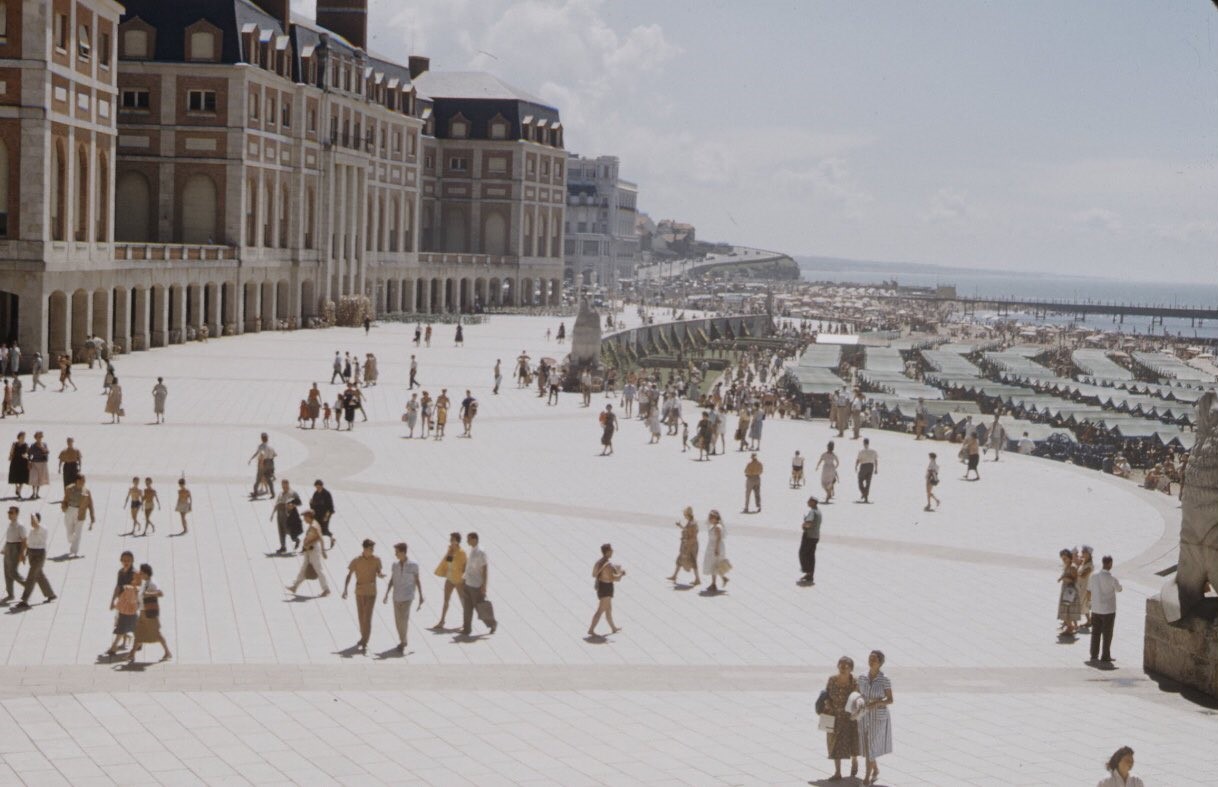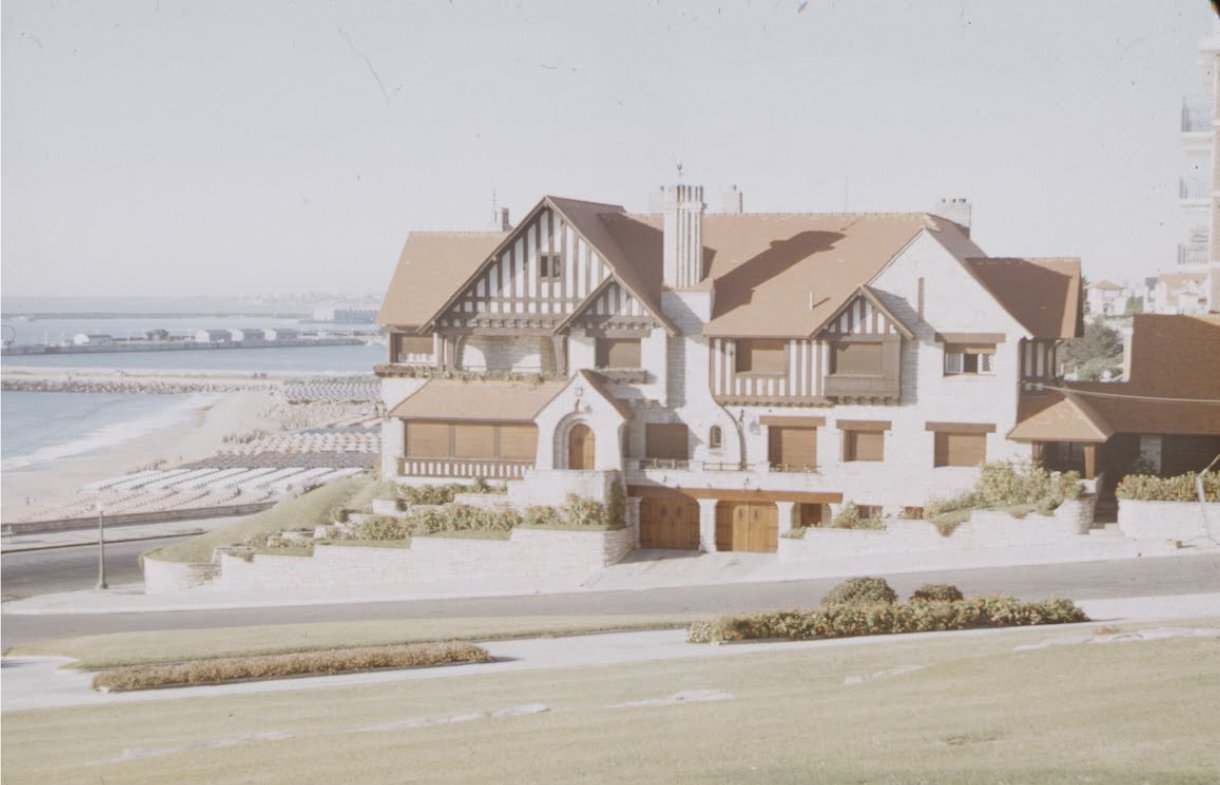Week of the 03/20/2023 - #12
Contents
science
- A single aperiodic tile
- GPT
tech
- Vim trick for special characters
- Postgresql tips
art
- Mar del Plata 1958 photos
A single aperiodic tile
This week a paper was published with another interesting result of a mathematical problem I’ve been following for years: aperiodic tilings. The question is very simple to state: can you find a set of “tiles” that can tile the two dimensional plane only in an aperiodic way? That is: a tiling which if you rotate and/or translate in any direction by any amount it never repeats.
This question has been solved many years ago and it was proven that such a tiling exists. Initially the problem was prestend by Wang using what are known as “Wang tiles”. In 1966, Robert Berger proved that no algorithm for the problem can exist, by showing how to translate any Turing machine into a set of Wang tiles that tiles the plane if and only if the Turing machine does not halt. The undecidability of the halting problem (the problem of testing whether a Turing machine eventually halts) then implies the undecidability of Wang’s tiling problem. In this paper he found a set of 20,426 tiles.
Since then the number of tiles has been reduced to 104 then 13. In Undecidability and Nonperiodicity for Tilings of the Plane written by Raphael M. Robinson. Since then the number of tiles has been reduced to 6, then to 5 and eventually to two by Roger Penrose. Tha question everybody has been asking was pretty obvious: can a single tile be found that only tiles in an aperiodic way? This week it was finally answered! And the answer is yes. Here’s the tile:

This “hat” tile can onl generate aperiodic tilings. And this is the paper: An aperiodic monotile by David Smith, Joseph Samuel Myers, Craig S. Kaplan, Chaim Goodman-Strauss.
- Pentaplexity - A class of non-periodic tilings of the plane by Roger Penrose - One very interesting thing I found in the paper is a link to this article which was published long ago (1978) and which I never had a chance to read. Aprently the old issues of the magazine has been archived and opened to the public here. This is the archive.
GPT
Some papers I want to read related to ChatGPT:
- GPTs are GPTs: An Early Look at the Labor Market Impact Potential of Large Language Models
- Sparks of Artificial General Intelligence: Early experiments with GPT-4
- GPT-4 Technical Repor - “We report the development of GPT-4, a large-scale, multimodal model which can accept image and text inputs and produce text outputs. While less capable than humans in many real-world scenarios, GPT-4 exhibits human-level performance on various professional and academic benchmarks, including passing a simulated bar exam with a score around the top 10% of test takers. GPT-4 is a Transformer-based model pre-trained to predict the next token in a document. The post-training alignment process results in improved performance on measures of factuality and adherence to desired behavior. A core component of this project was developing infrastructure and optimization methods that behave predictably across a wide range of scales. This allowed us to accurately predict some aspects of GPT-4’s performance based on models trained with no more than 1/1,000th the compute of GPT-4.”
- gpt4all github repo - “gpt4all: a chatbot trained on a massive collection of clean assistant data including code, stories and dialogue”
- BlenderGPT - Use commands in English to control Blender with OpenAI’s GPT-4
Vim trick for special characters
A while back, we wrote about how to insert non-printable and other special characters with
When would you use this? Note-taking for one. Write any kind of prose in Vim and you are sure to come across a use for a character that’s not on your keyboard: Currency symbols, dashes, bullets, and much more. Here are some you may find helpful. Notice how each two-letter combination (“di-graph”) is designed to be memorable. Certainly much easier than remembering numeric codes.
- oo • (bullet)
- Db ◆ (diamond bullet)
- ’% ϴ (Greek theta)
- Pd £ (British pound symbols)
- Co © (copyright symbol)
- Rg ® (registered trademark symbol)
- Eu € (euro symbol)
- -1 ‐ (hyphen)
- -N – (en dash)
- -M — (em dash)
This comes from vim tricks
Postgresql tips
Lots of great psql tips: https://psql-tips.org/psql_tips_all.html
Mar del Plata 1958 photos
Photos taken by Dmitri Kessel for the Life magazine in the summer of 1958. Taken from the Argentina en la memoria - Twitter account












